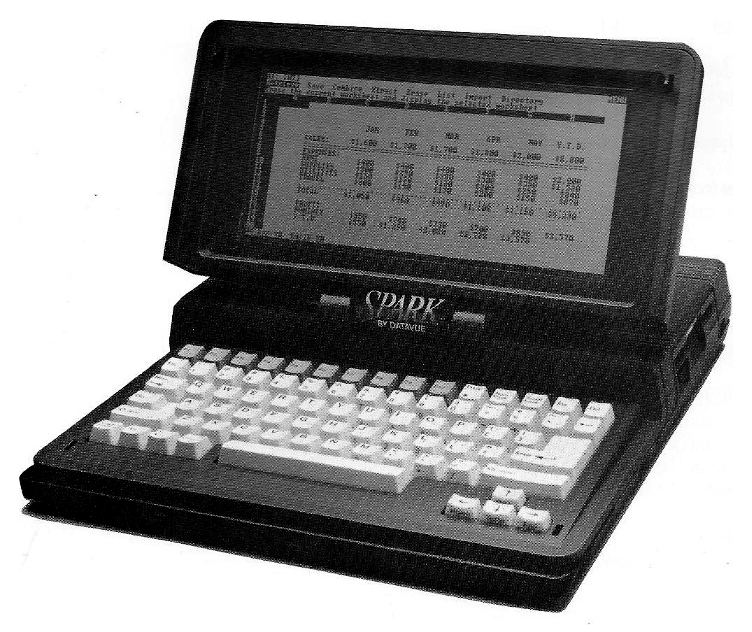|
Quadram Quadcolor
The Quadram Quadcolor is a Video card, graphics card for IBM Personal Computer, IBM PC computers by Quadram Corporation, first sold in 1983. It is a superset of the then-current IBM Color Graphics Adapter, CGA standard, using the same monitor standard (4-bit computing, 4-bit digital Transistor-transistor logic, TTL RGB(I), RGBI monitor or NTSC Composite video, composite video) and providing the same pixel resolutions. Description The Quadcolor has twice the memory of a standard CGA board (32k, compared to 16k), and offers a mode with two freely definable colours. If used with the Quadcolor II enhancement board, the additional memory can be used in graphics modes to double the color depth, allowing for two additional graphics modes — resolution with 136 colors, or resolution with 16 colors. This card is supported by Dr. Halo, ''Dr. Halo II'' and ''Turbo Pascal#Version 4, Turbo Pascal Graphix Toolbox''. Models * Quadram Quadcolor I * Quadram Quadcolor II Output capa ... [...More Info...] [...Related Items...] OR: [Wikipedia] [Google] [Baidu] |
Quadram Corporation
CoreCard Corporation is an American financial technology company based in Norcross, Georgia. Before 2021, the company was named Intelligent Systems Corporation and once sold portable computers, video terminals, expansion cards, and other peripherals through a variety of manufacturing subsidiaries. Founded in 1973, the company restructured as a master limited partnership in 1987, becoming Intelligent Systems Master Limited Partnership. Notable subsidiaries included Datavue Corporation, which manufactured portable computers; Quadram Corporation, which manufactured expansion cards, mostly for the IBM Personal Computer, IBM PC, including memory and video cards (Quadram Quadcolor I & II); Princeton Graphic Systems, a maker of computer monitors; Intecolor Corporation, which took over Intelligent Systems's terminal manufacturing operations; and more. In the 1990s, Intelligent Systems pivoted into providing venture capital for start-up technology firms, changing its name back to Intelli ... [...More Info...] [...Related Items...] OR: [Wikipedia] [Google] [Baidu] |
Composite Video
Composite video, also known as CVBS (composite video baseband signal or color, video, blanking and sync), is an analog video format that combines image information—such as brightness (luminance), color (chrominance), and synchronization, into a single signal transmitted over one channel. It is most commonly used for standard-definition television, and is sometimes referred to as ''SD video''. The signal is typically carried on a yellow RCA connector, with separate connectors used for left and right audio channels. In professional equipment, a BNC connector is often used instead. Other connector types may appear in compact consumer devices like digital cameras. Composite video supports several line resolutions, including 405-line, 525-line, and 625-line interlaced formats. It exists in three major regional variants based on analog color encoding standards: NTSC, PAL, and SECAM. The same format can also be used to transmit monochrome (black-and-white) video. Signal comp ... [...More Info...] [...Related Items...] OR: [Wikipedia] [Google] [Baidu] |
Computer Display Standards
Computer display standards are a combination of aspect ratio, display size, display resolution, color depth, and refresh rate. They are associated with specific expansion cards, video connectors, and monitors. History Various computer display standards or display modes have been used in the history of the personal computer. They are often a combination of aspect ratio (specified as width-to-height ratio), display resolution (specified as the width and height in pixels), color depth (measured in bits per pixel), and refresh rate (expressed in hertz). Associated with the screen resolution and refresh rate is a display adapter. Earlier display adapters were simple frame-buffers, but later display standards also specified a more extensive set of display functions and software controlled interface. Beyond display modes, the VESA industry organization has defined several standards related to power management and device identification, while ergonomics standards are set by the TCO. ... [...More Info...] [...Related Items...] OR: [Wikipedia] [Google] [Baidu] |
Orchid Graphics Adapter
The Orchid Graphics Adapter is a graphics board for IBM PC compatible computers, released in 1982 by Orchid Technology. It was intended to provide high resolution (at the time) monochrome graphic abilities to computers limited to text displays. It was aimed at the business market and one of the three first third party graphic boards for PCs (the others being Plantronics Colorplus and Hercules Graphics Card). It offered a monochrome 720 × 350 pixel resolution (similar to Hercules Graphics Card) and required an existing MDA board to function. The board also offered an IBM PC joystick adapter. No software, other than GSX-86 and that supplied with the board ('' Dr. Halo'' by Media Cybernetics), offered support for the hardware. Graphic routines could be called from FORTRAN, PASCAL or IBM BASIC. Output capabilities *720 × 350 monochrome graphics, pixel aspect ratio of 1:1.55. See also * Plantronics Colorplus *Hercules Graphics Card *IBM Monochrome ... [...More Info...] [...Related Items...] OR: [Wikipedia] [Google] [Baidu] |
Hercules InColor Card
The Hercules InColor Card (GB222) is an IBM PC compatible 8-bit ISA graphics controller card released in April 1987 by Hercules Computer Technology, Inc. It supported a fixed hardware palette of 64 colours, with the ability to display with 16 colours on an EGA monitor and software redefinable fonts. (Pictures and programming information) (NB. The second edition does no longer discuss the InColor and MCGA cards at detail level.) After the success of the monochrome Hercules Graphics Card (HGC) and Hercules Graphics Card Plus (HGC+) which gained wide developer support, the market was changing with the release of new colour cards which were becoming increasingly affordable. So Hercules released the InColor to compete primarily with IBM's new high-end VGA card, and also with many existing EGA compatible cards on the market. The card came with drivers for popular programs like ''Lotus 1-2-3'', ''AutoCAD'', ''WordPerfect 5.0'' or ''Microsoft Windows''. Some compatible games wit ... [...More Info...] [...Related Items...] OR: [Wikipedia] [Google] [Baidu] |
Plantronics Colorplus
The Plantronics Colorplus is a graphics card for IBM PC computers, first sold in 1982. It implements a superset of the then-current CGA standard, using the same monitor standard (4-bit digital TTL RGBI monitor) and providing the same pixel resolutions. It was produced by Frederick Electronics (of Frederick, Maryland), a subsidiary of Plantronics since 1968, and sold by Plantronics' Enhanced Graphics Products division. The ''Colorplus'' has twice the memory of a standard CGA board (32k, compared to 16k). The additional memory can be used in graphics modes to double the color depth, giving two additional graphics modes—16 colors at resolution, or 4 colors at resolution. It uses the same Motorola MC6845 display controller as the previous MDA and CGA adapters. The original card also includes a parallel printer port. Output capabilities CGA compatible modes: * 16 color mode (actual a text mode using , ▌, ▐ and █) * in 4 colors from a 16 color hardware palette. P ... [...More Info...] [...Related Items...] OR: [Wikipedia] [Google] [Baidu] |
Tandy Graphics Adapter
Tandy Graphics Adapter (TGA, also Tandy graphics) is a computer display standard for the Tandy 1000 series of IBM PC compatibles, which has compatibility with the video subsystem of the IBM PCjr but became a standard in its own right. PCjr graphics The Tandy 1000 series began in 1984 as a clone of the IBM PCjr, offering support for existing PCjr software. As a result, its graphics subsystem is largely compatible. The PCjr, released in March 1984, has a graphics subsystem built around IBM's Video Gate Array (not to be confused with the later Video Graphics Array) and an Motorola 6845, MC6845 CRTC and extends on the capabilities of the Color Graphics Adapter (CGA), increasing the number of colors in each screen mode. CGA's 2-color mode can be displayed with four colors, and its 4-color mode can be displayed with all 16 colors. Since the Tandy 1000 was much more successful than PCjr, their shared hardware capabilities became more associated with the Tandy brand than with IBM. Wh ... [...More Info...] [...Related Items...] OR: [Wikipedia] [Google] [Baidu] |






